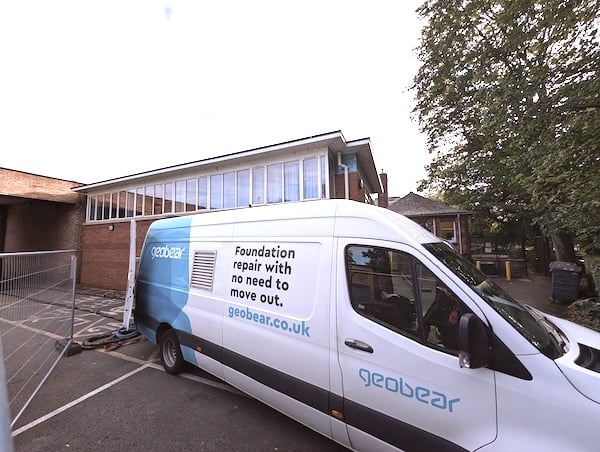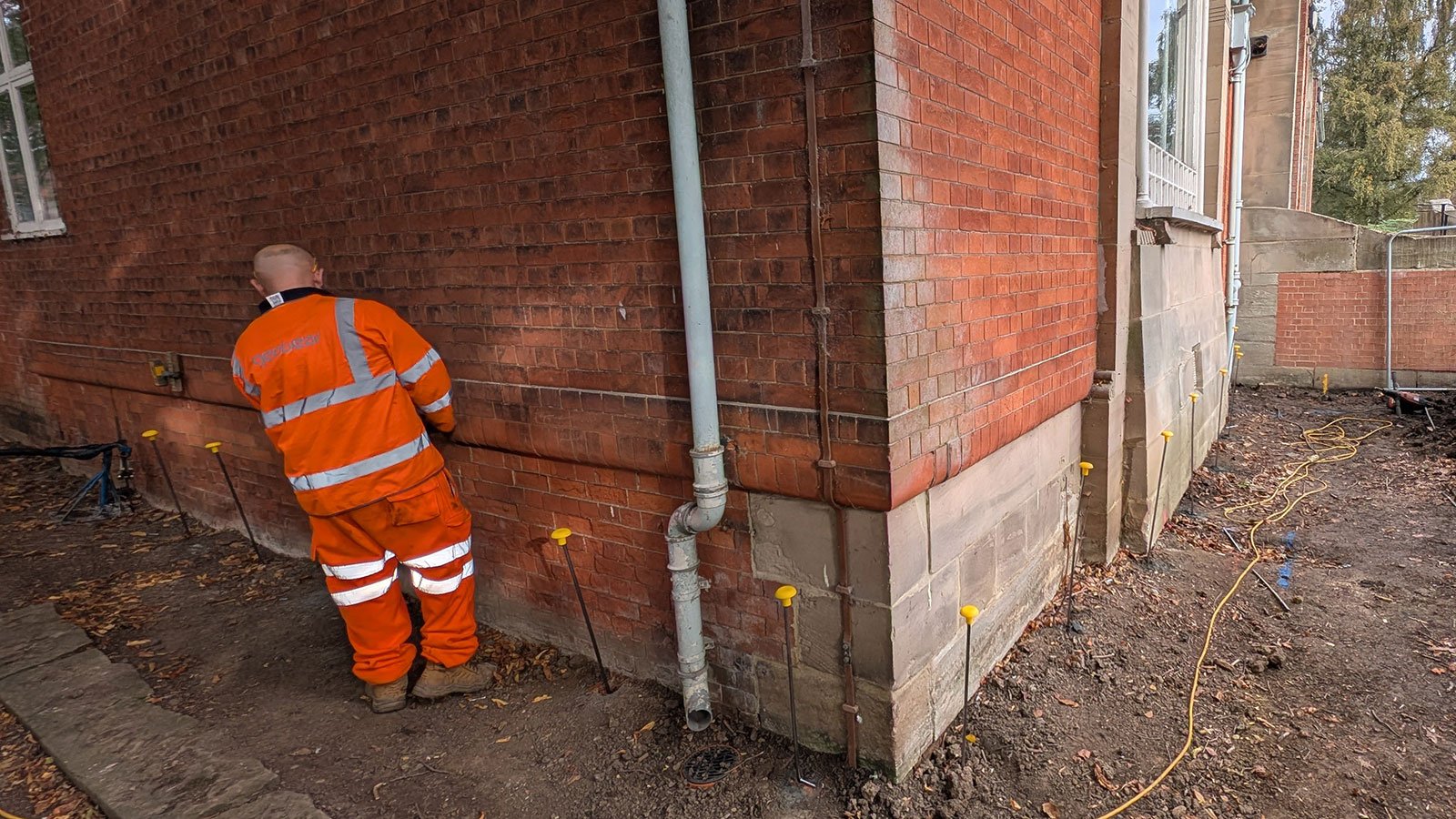
Public Assets
Challenge
Long Eaton’s Grade II listed library developed subsidence from shrinkable clay and water ingress. Traditional underpinning risked vibration damage, excavation, and prolonged closure of the community facility.
Solution
Geobear strengthened foundations using geopolymer injection along 25.8 m of wall, improving soil density threefold and halting settlement — all completed externally with zero disruption.

SPT values increased from 2–4 to >10
No excavation or vibration to the listed structure
Library remained open throughout for three days throughout the works
Long Eaton Library, a Grade II listed Carnegie library built in 1906, had developed settlement and cracking at its front-left corner. Cracks were visible externally in the brickwork and mullions and internally through plaster finishes.
A structural appraisal concluded that the movement was caused by shallow strip foundations set in high-plasticity clay, affected by tree root activity and rainwater discharge close to the walls. Left untreated, further settlement would have threatened both the structural integrity and the heritage fabric of this important community building.
A ground investigation (2023) confirmed the issue:

The main challenge was stabilising a heritage-listed building in the centre of Long Eaton. Traditional underpinning or piling would have involved heavy excavation, vibration, and long-term closure of the library. This was not acceptable for a Grade II listed structure, particularly one with sensitive features such as mosaics, stained glass, and carved brickwork.
The soils posed further difficulties. The very soft clays beneath the shallow foundations had very low SPT values, meaning that any further drying from trees or wetting from downpipes could have caused accelerated movement. At the same time, the load-bearing sands and gravels sat deeper, so the solution needed to strengthen the upper soils while transferring loads into the denser layers.
The client therefore, needed a precise, non-invasive solution that could be installed quickly and safely without damaging the fabric of the library or causing disruption to public services.
Geobear designed and implemented a geopolymer injection programme to underpin the affected corner of the library.

Get in touch with our expert team today and discover how Geobear can extend the life of your critical infrastructure assets.

